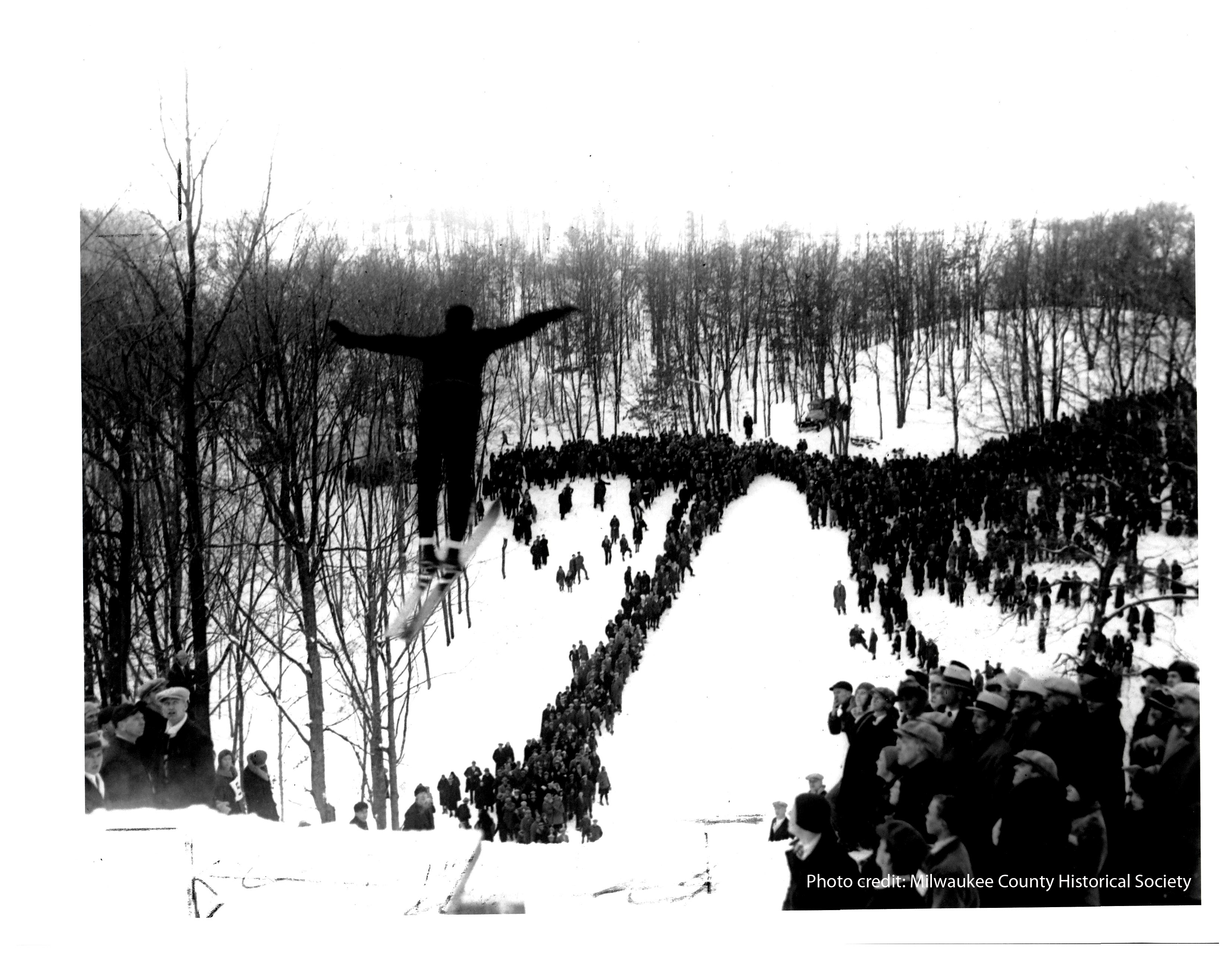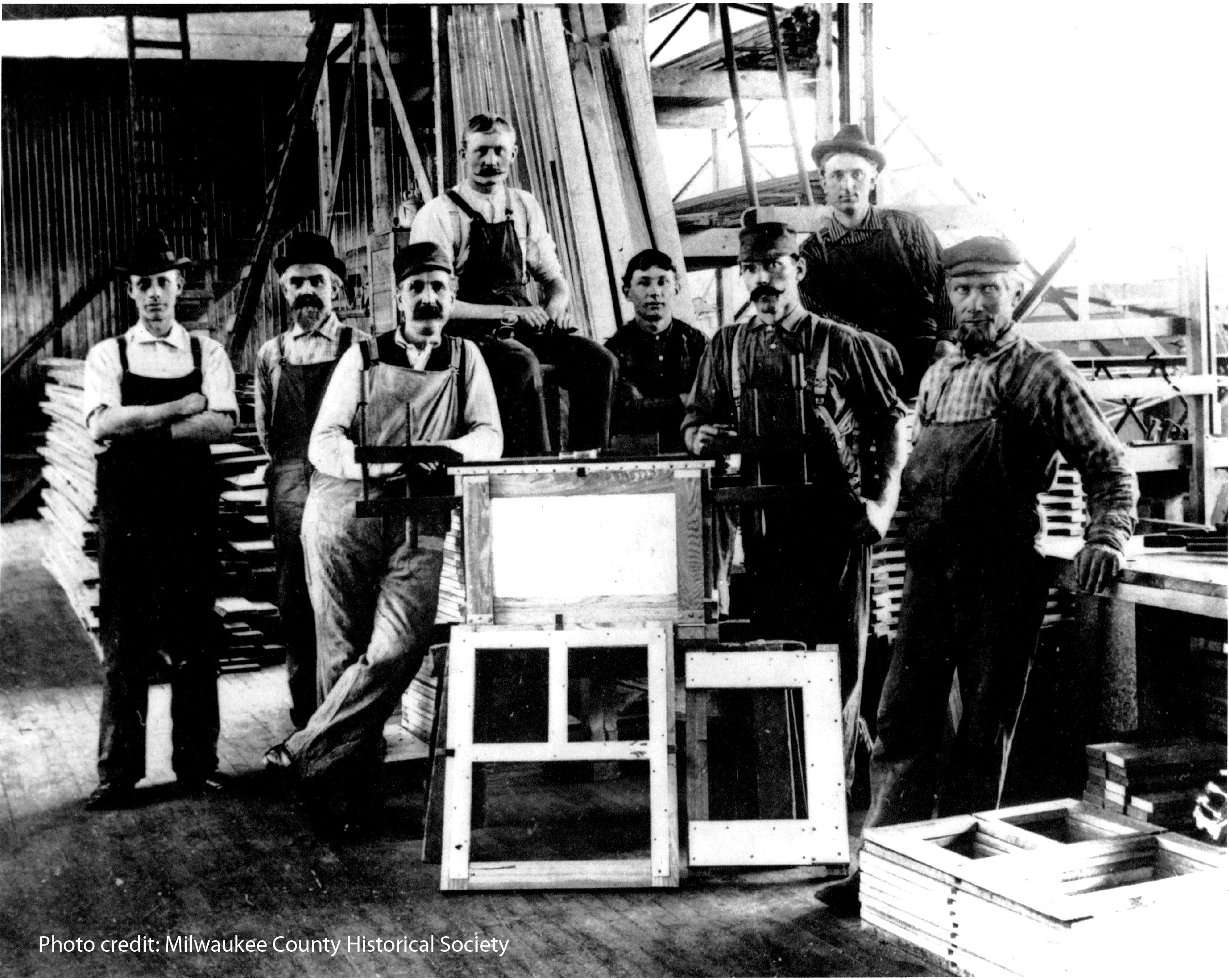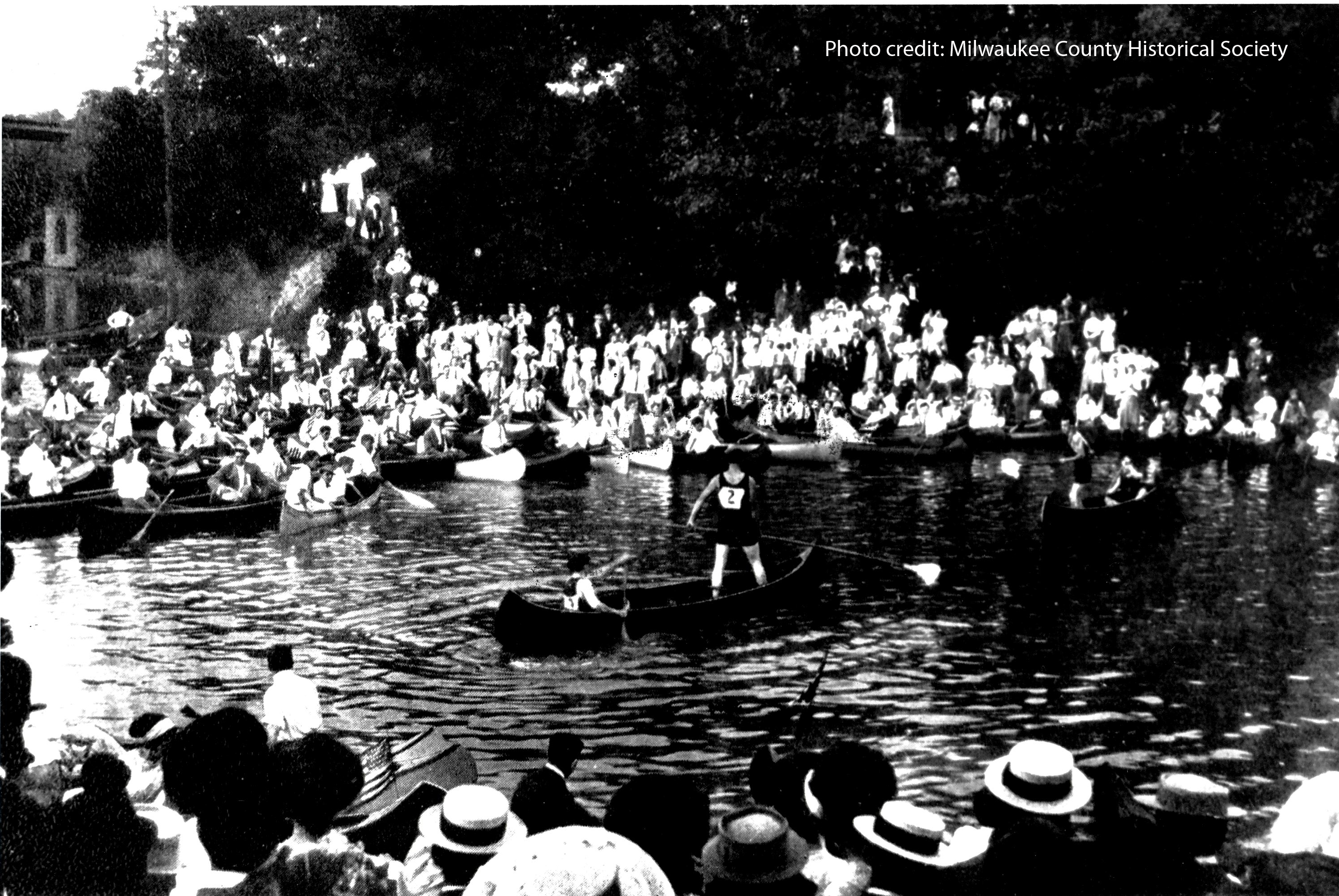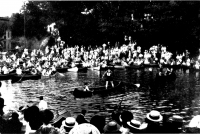At our Riverside Park branch, we recently moved our woodshop out to the warehouse on our property west of the UEC and converted the old space to a new meeting room for our staff and guests. Thanks to our facilities team, the “woodshop meeting room” is beautifully furnished with repurposed materials including a wooden wall constructed from recycled floorboards that we had in storage. When deciding on decorations for the room, we wanted to capture this historical sense of place- focusing on the Milwaukee River, Riverside Park, and the warehouse itself. Illiana Zambrano and Kim Forbeck, two history buffs on our staff, spent hours combing the archives at the Milwaukee County Historical Society and collected 25 photographs to display, using re-purposed old windows to frame the photos.
These historical photographs date from the 1880s to1985 and demonstrate Milwaukee’s rich history. They depict the local community coming together, residents enjoying their natural environment, and different types of industries flourishing. In the photographs, you can see a contrast between green and urban spaces and how they came together.

They illustrate different recreational activities that Milwaukee residents took part in including taking a steamboat to their local beer gardens, canoeing, canoe jousting, ice skating, ski jumping and so much more.
Some of these photos capture the industrial era: one of the photographs includes the workers from the National Brake & Electric Company that sat where the oak savanna of the Milwaukee Centennial Rotary Arboretum sits today.

Ice harvesting was a major industry in the city of Milwaukee in the 1850s and early 1900s when people did not have modern refrigerators to store their food supply. Blocks of ice were used to refrigerate food and beverages for up to a week. Ice harvesting companies would harvest more than 260,000 tons of ice per year from Milwaukee River. These companies employed men from not only the urban city but also the rural parts of Wisconsin. Individuals and small business (local hotels and restaurants) harvested smaller quantities of ice.
These photographs are a snapshot in time of the history of Riverside Park and Milwaukee River. There is so much more to learn:
How did factories impact the environment? How was the native land polluted and revitalized? And, how did individuals come together to make Riverside Park where people of all ages can gather and truly enjoy green space in an urban setting?

The woodshop meeting room is not open to the public on a daily basis, but once the new exhibit is installed feel free to visit and ask a member of the Visitor Services staff to show you the room and historical photos on display.
This blog is written by Illiana Zambrano and Mike Larson
Note: Illiana Zambrano was a member of the Visitor Services staff at the Urban Ecology Center who enjoyed working directly with visitors, the educational nature of the center, and developing ideas to help bring awareness about topics regarding climate change and environmental justice. Illiana now continues her journey to connect individuals to valuable resources by working as a Librarian with the Milwaukee Public Libraries. When she is not engaging with history, environmental efforts, or conducting research, she enjoys reading fiction, poetry, kayaking, camping, running, and going on hikes with her mixed terrier, Sirius.
Special thanks to Kim Forbeck and the Milwaukee County Historical Society!!





